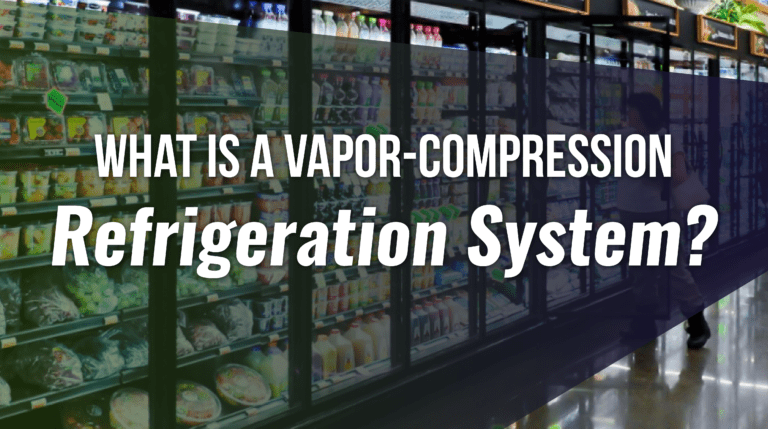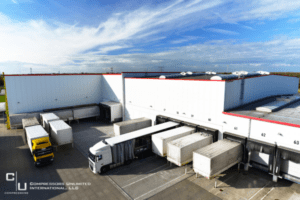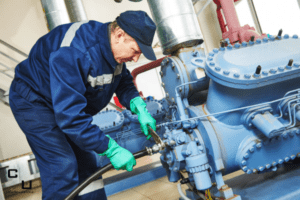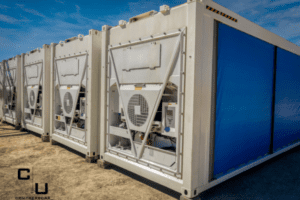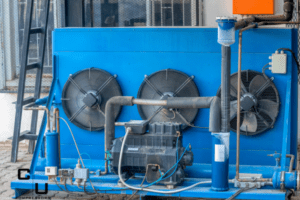

Refrigeration has been accomplished in a variety of ways over the course of history, but vapor-compression refrigeration systems (VCRS) have become the preferred option thanks to their efficiency and reliability. If you’ve ever driven a car or used an HVAC system, you have probably used a VCRS without even realizing it. So what is a vapor-compression refrigeration system?
The Basics
Essentially, a vapor-compression refrigeration system is a system that uses liquid refrigerant in a closed system which circulates the refrigerant through four stages in which it is alternately compressed and expanded, changing it from liquid to vapor. As this change happens, heat is either absorbed or expelled by the system, resulting in a change in temperature of the surrounding air that is passing over the unit’s components. Nearly all of the refrigeration systems we use today use this cycle to accomplish cooling.
The Four Components
Your VCRS system is made up of four main components: the evaporator, condenser, compressor and expansion valve. The evaporator and condenser are both a series of coils that are designed to create more surface area for the refrigerant to react with. Meanwhile, the compressor and expansion valve are mechanical units that control the amount of pressure and temperature change that occurs between the two stages. The evaporator and condenser are at opposite ends of the system where they manage the exchange of heat into and out of the system.
How It Works
Initially, the VCRS is charged with a liquid refrigerant until it reaches its correct operating pressure. When the system turns on, the refrigerant passes through the compressor, turning it into a high pressure/high temperature vapor. At this point, it passes through the condenser coils, which are designed to allow airflow to the exterior. As ambient air from outside blows across the condenser coils, it carries away the excess heat, allowing the vapor to cool and condense into liquid form. From here, the liquid flows to the expansion valve where it is rapidly expanded back into a low pressure vapor. Due to the sudden drop in pressure, the refrigerant also sees a drastic drop in pressure. With the supercooled refrigerant flowing into the evaporator coils, this is where the real magic happens. A fan inside the unit directs air over the supercooled coils and into the room or space that you want cooled. As the air from the fan passes over the cold coils, it is also cooled, which fills the space with cold air. This also has the effect of warming the refrigerant back up by taking the heat out of the room. As this exchange happens, the refrigerant flows back around to the compressor so that it can be sent outside to ditch the excess heat once more. By adjusting the rate of expansion and compression, it is possible to control the precise temperature of any space, whether you are cooling an entire building or a walk-in refrigerator.
Now that you are familiar with the basics of the vapor-compression refrigeration system, you can identify the various parts of the system in your application, and understand how each component plays a crucial role in achieving the desired cooling effect. These systems have grown in popularity because they can last up to a decade or more with regular maintenance. To learn more about vapor compression refrigeration systems, and how to find the right parts for your HVAC or refrigeration system, contact Compressors Unlimited today. We can help you find the right refrigeration compressors and parts to fit any system over 7.5 tons to 150 tons. If you are unsure of the best brand for your refrigerations system, we are here to assist with this guidance asa well.

